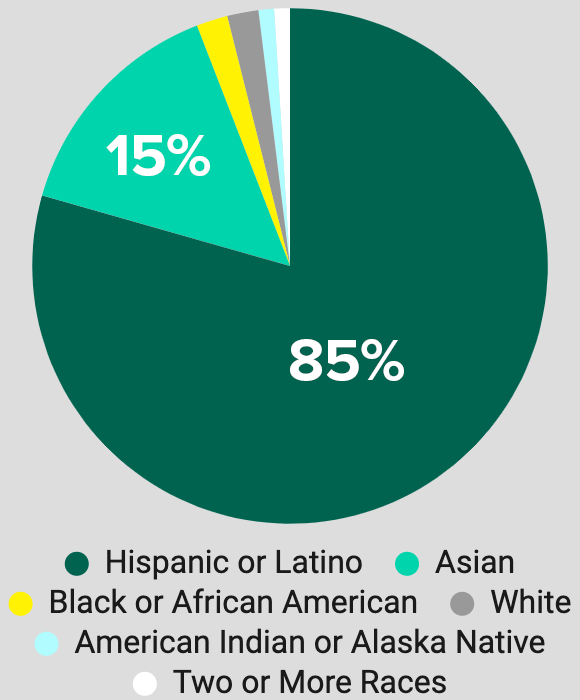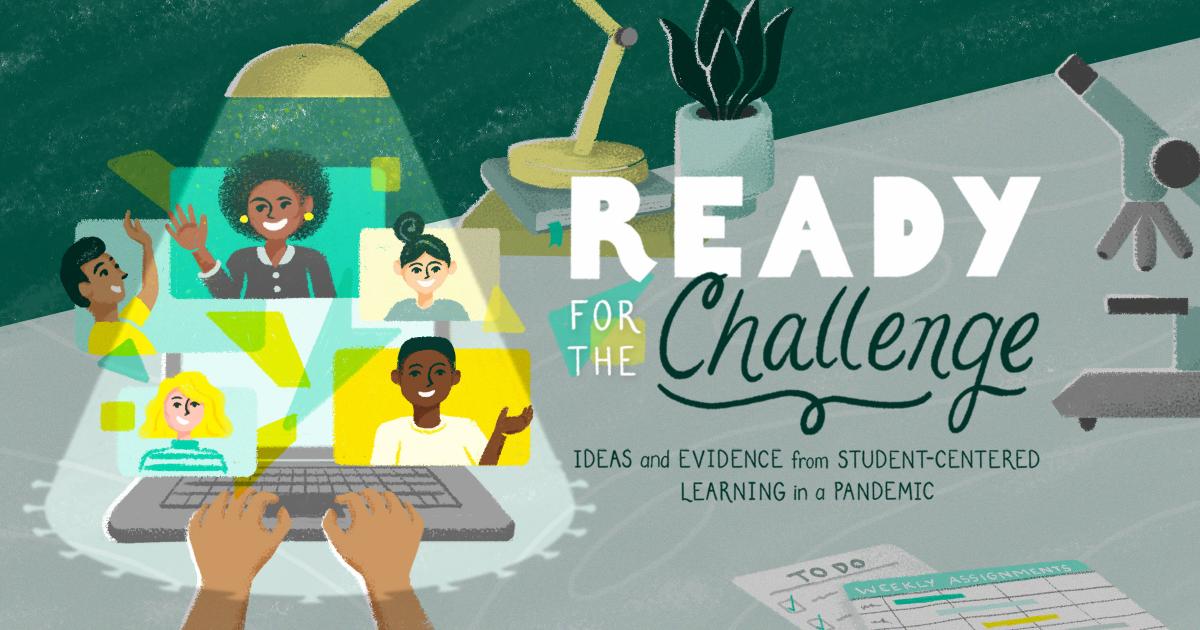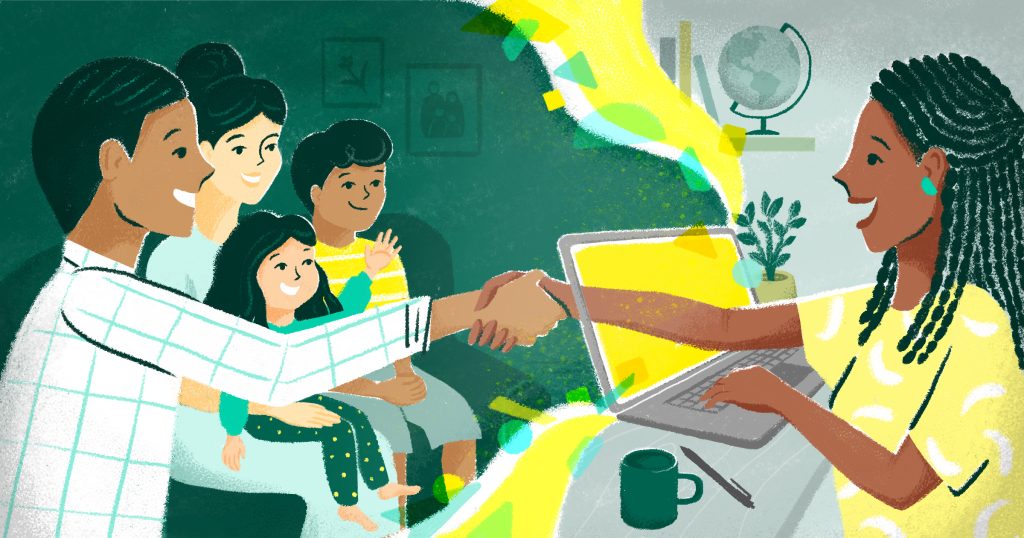This post is part of a larger blog series this year, looking at how schools have used student-centered strategies to respond to the pandemic. This includes both learning designs, but also the success indicators schools use to know whether they are successful. Here, we profile UCLA Community School in Los Angeles, CA.
When we hear about “student-centered” and “personalized” learning, we often hear about individualizing learning: one-to-one access to technology, curriculum designed to meet unique student needs, content driven by students’ individual interests.
It’s less often we hear about student-centered learning in communal terms.
At UCLA Community School, being “student-centered” is just as much about acknowledging and celebrating our shared humanity as it is about attending to individual differences.
Throughout 2021, the Education Evolving team is collecting stories and evidence from schools leveraging student-centered learning during the pandemic. UCLA-CS is the first school profiled for a blog series on this topic.
Nestled in the heart of Koreatown near downtown Los Angeles, UCLA Community School (UCLA-CS) serves approximately 1,000 students in grades K-12. Its mission is to graduate students ready to “enter the adult world as confident and capable human beings, prepared to succeed in college, pursue meaningful careers, and participate in our democracy.”
UCLA-CS is collocated with five other pilot schools on the RFK Community Schools campus, the site of the former Ambassador Hotel where Senator Kennedy was tragically assassinated in 1968. Vibrant murals by celebrated local artists adorn the walls of the school and broader campus.

UCLA-CS is a full-service community school, providing a wide range of wraparound services for students and families. Its innovative dual-language program was designed to build on the assets and identity of the neighborhood’s Spanish and Korean-speaking population. School leadership is distributed and collaborative, reflecting the founding principle that students and those who know them best—families and educators—should share power in the decision-making process.
UCLA-CS At A Glance
Location: Los Angeles, CA (urban)
School Type: District pilot school
Grades served: TK-12
Number of students: 1,004

Students with Disabilities: 13%
English Learners: 35%*
FRPL Eligible: 91%
*85% of students speak a language other than English at home.
Sources: Civil Rights Data Collection and District Profile.
As its name suggests, UCLA-CS maintains a close partnership with the University of California Los Angeles (UCLA), which runs a teacher residency program, supports organizational learning and development, and conducts research in partnership with the school.
An “existential crisis”: Responding to Covid-19
According to Rebekah Kang, a coordinator at UCLA-CS, the abrupt move to distance learning last spring in the context of a global pandemic prompted an “existential crisis”. “What is a school? What is a teacher?” Kang and her colleagues asked themselves. Business as usual no longer made sense in a time of such intense anxiety, loss, and hardship.
Fortunately, the school’s underlying student-centered principles helped it to pivot, and in some unexpected ways, to thrive.
The remainder of this post highlights two such principles: a commitment to meeting students’ foundational needs and developing positive student identities. It describes how each principle has looked in practice, and then how the school has measured and collected evidence of success with that principle.

Principle 1 in Practice: Meeting basic needs through comprehensive supports
Since the school opened its doors in 2009, UCLA-CS has aimed to help its families to access food, healthcare, housing, legal representation, and other social services to support their wellbeing.
So when the pandemic hit, the school was already set up to connect families with the resources that so many had abruptly found themselves without.
The RFK campus became a “Grab n Go” food center for the district, with staff and volunteers preparing and distributing over 5,000 meals a day to students, families, and community members.

During these Grab n Go food pick-ups, families shared with UCLA-CS staff about the challenges they were facing: lack of access to technology, loss of housing, wage theft, immigration concerns, and serious illness—including loss of loved ones—due to the virus itself.
The school’s “support team”—including administrators, counselors, a social worker, psychologist, and coordinator—quickly mobilized community partners to provide resources including internet hot spots, technology help, and free Covid tests offered through the district. A mutual aid fund was established to support families needing to quarantine and unable to secure groceries and basic supplies.
According to Karen Hunter Quartz, Director of the UCLA Center for Community Schooling, there was “a big community press to figure it all out.”
Principle 1 in Evidence:Integrated data systems to meet student needs
Staff members at UCLA-CS share a deep commitment to collecting and using data, which requires navigating disparate data systems used to monitor students’ needs, track communications with families, and chart progress toward students’ academic and non-academic goals.
When schools closed, the need for an integrated data system, or IDS, became acute. A team of staff members and UCLA researchers got to work.
The initial iteration of UCLA-CS’s IDS was a huge spreadsheet that tracked a wide range of data points on students—including work completion, notes from one-on-one student check-ins, family touchpoints, provision of various services, and progress toward learning goals. At the beginning of Covid, the UCLA-CS team incorporated data from a student survey developed by one of the high school teachers and implemented schoolwide. Students reported who was home with them during the school day, the nature of their home learning environment, and how they were engaging in virtual learning activities. Teachers used the survey responses to better connect with students virtually.

In the winter of 2021, the team created a new iteration of the IDS using a relational database to improve communication across the support team.
Data are reviewed weekly by the school’s support team to identify students needing extra support. Students are categorized according to their level of need using an MTSS framework. All students receive Tier 1 supports, like general home-school communications about opportunities and resources. Students in need of Tier 2 and 3 supports are each assigned a case manager who helps the student and their family with case-specific needs, like unemployment assistance, food security, and legal help. Families in need of Tier 3 supports require the most intensive assistance, often due to Covid-19 illness or unsafe housing situations. Case managers keep a record of family touchpoints and services provided, which helps all staff members who interact with a given student to streamline their support.
Importantly, the IDS is designed “from the bottom up” to be flexible and adaptive, using local measures created in response to shifting needs. Some of the changes this past year will be less relevant once the pandemic subsides, while others may be useful for years to come. Read more about the initial stages of UCLA-CS’s IDS here.

Principle 2 in Practice: Promoting positive identity through healing-centered learning
As the 2019-20 school year drew to a close, a second crisis loomed over the UCLA-CS community. George Floyd had been brutally murdered in Minneapolis, and old wounds reopened in Los Angeles—a city with a long and painful history of police violence against the Black community. Many in the school community marched in solidarity with Black Lives Matter. A student-led movement, #StudentsDeserve, sought to defund the school district’s police department.

Leaders at UCLA-CS stepped back to assess where they were and where they were headed. While they had successfully mobilized a host of resources for students and families to make it through the school year, truly honoring students as learners would mean much more than meeting basic needs. It would mean helping students to understand their roles in this pivotal moment in history; and supporting them to take action on the pressing issues facing their communities.
Teachers led professional learning sessions throughout the summer, seeking a framework that would guide their planning for a virtual 2020-21 school year. They read Shawn Ginwright’s work on healing-centered engagement and Bettina Love’s work on abolitionist teaching. “It was a really generative, powerful summer,” said Quartz, who participated in the learning sessions.
Staff adopted “healing-centered engagement” as a way to frame their work for the year—a strengths-based, student- and community-centered approach to helping young people heal from traumatic experiences. According to Shawn Ginwright, the approach “views those exposed to trauma as agents in the creation of their own well-being rather than victims of traumatic events.” Central to this approach is the understanding of one’s cultural identity as a source of collective strength and wellbeing.

Starting in the fall of 2020, UCLA-CS teachers began practicing healing-centered pedagogy.
Students wrote autobiographies, drew self-portraits, and penned poems in “identity notebooks.” The school’s youngest learners used objects found in their own homes to practice their counting skills. In a unit on colorism, middle school students created “skin appreciation pictures,” which were compiled into a music video and shared on YouTube. Middle school students interviewed family and community members for their California History class. In Spanish, middle and high school students produced virtual Day of the Dead altars to honor their family members who had been lost, some to Covid-19.
Principle 2 in Evidence: Documenting identity through the counter-narrative project
The team at UCLA-CS recognized that—as they expanded their focus on identity and healing, and despite the challenges posed by the pandemic—there was so much learning going on that wasn’t being captured by the typical metrics. Students were learning about their cultural and linguistic heritage. Many were deeply engaged in activism tied to the Black Lives Matter movement and to climate justice; they were learning to be powerful, active participants in society.
In part to understand this learning, and in part to share that learning with external stakeholders, UCLA-CS staff and students collaboratively developed the “Counter-Narrative Project”: a collection of stories, images, data points, and other digital artifacts documenting the lived experiences of students and their families during the 2020-21 school year. In contrast to the prevailing rhetoric around “learning loss,” this project highlights the personal and academic growth students have achieved this year, along with the many challenges.

Teachers submit examples of what and how their students are learning using a Google form, and the project team has begun to analyze teacher submissions for common themes. Thus far, they have identified three emerging themes: introspection and a focus on the lived experience, the use of technology to offer student choice, and leveraging technology to foster connections between students and staff.
Ultimately, these “counter-narratives” will be compiled into a digital archive and shared in the school’s Annual Report.
Importantly, students have played a key role in collecting and analyzing data from their peers. The Student Advisory Club, supported by UCLA researchers, has conducted focus groups to collect student and parent narratives. According to the project team, student-student information-gathering has yielded considerable insight on how students are doing, what their concerns and stresses are, and what is bringing them joy.
The counter-narrative project is still under development. We look forward to highlighting it as this series unfolds.

Conclusion
As many of us have learned during this period of prolonged social isolation, community and connection are essential to wellbeing. UCLA Community School truly takes this notion to heart.
While the principles of student-centered learning highlighted here—meeting foundational needs and allowing student identities to flourish—are often not the first things people think of when they think of “student-centered,” schools such as UCLA-CS show how absolutely integral they are to learning in a time of such unprecedented disruption.
Importantly, in terms of the strategies UCLA-CS uses to gauge their success, many of those highlighted above are leading indicators or qualitative in nature—“Did we reach out? How? Did it help? What did students learn about themselves and their communities?”
And yet, the link to success per more traditional measures is clear: 92 percent of UCLA-CS students have consistent attendance; 92 percent of 9th graders are on track to graduation, passing all their courses during fall semester; 90 percent of seniors are on track to graduate; and the 10 percent who aren’t have individualized plans to get there.
The last year has brought unthinkable challenges. As a school community, UCLA-CS has leveraged its collective agency to support students and families in this time of need. At its foundation are close relationships that humanize and affirm the richness of a community that has always demonstrated the capacity to adapt, evolve, and thrive.

About This Series
This blog post is part of a larger series exploring the practices and success indicators used for student-centered learning in a pandemic—and beyond. We are grateful to the Leon Lowenstein Foundation for their generous support for this series.
Read More & See Other Posts
